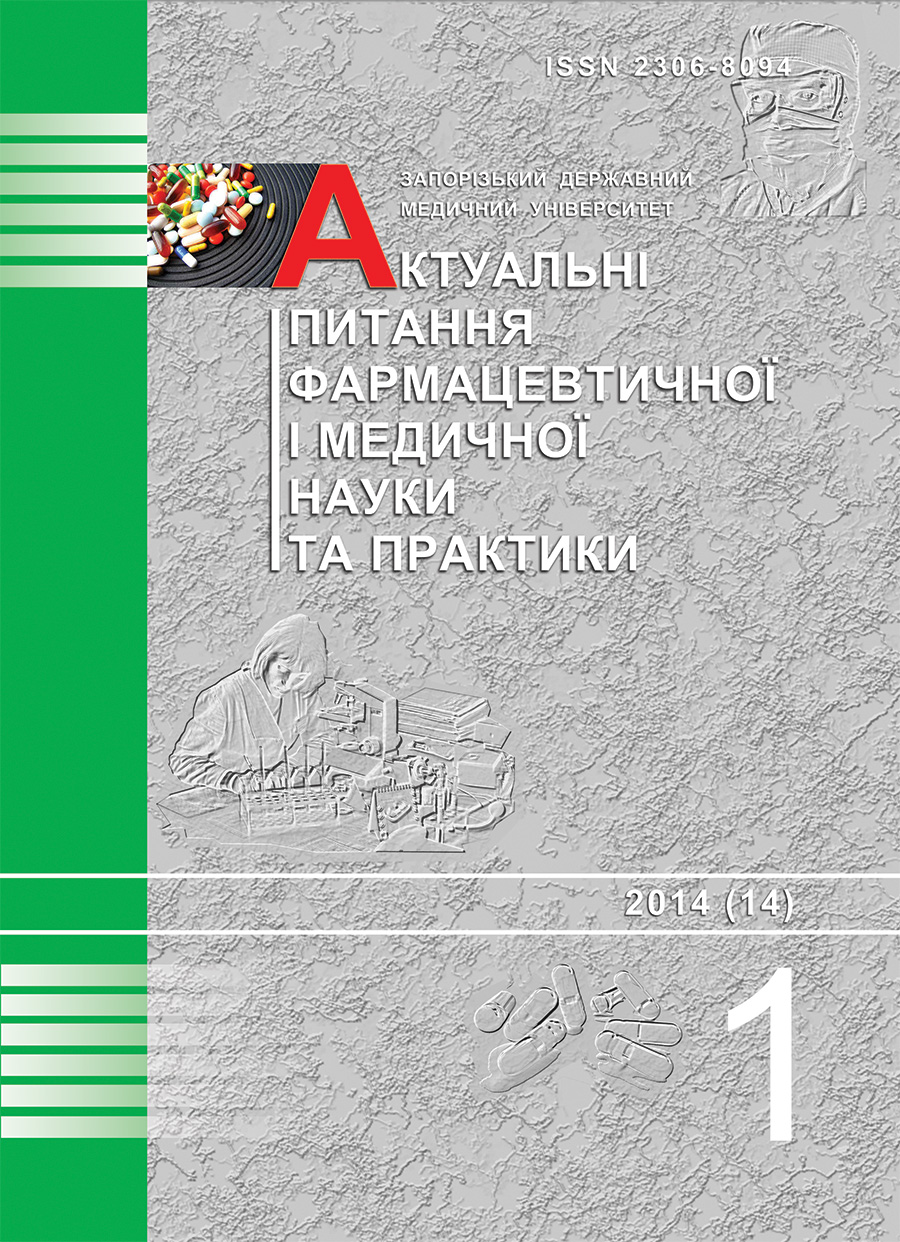RESULTS OF QUALITY COMPREHENSIVE EVALUATION OF DENTAL CARE FOR CHILDREN WITH BLOOD CLOTTING (PATHOLOGY)
DOI:
https://doi.org/10.14739/2409-2932.2014.1.24841Keywords:
children with blood clotting disorders, early teeth extraction, early prosthetics, secondary edentulismAbstract
Background. Treatment methods for diseases of teeth hard tissues and periodontium for children with blood clotting pathology are described in modern literature. But in practice we are faced with the problem of providing dental treatment for these children. Work of pediatric dentist is prevented by the risk of bleeding, fear of dental procedures, child’s psychoemotional tension and refusal of treatment because of bleeding. Taking into account the specificity of blood clotting pathology, surgical methods of dental treatment prevail for these children, which is evidenced by the early loss of deciduous and permanent teeth, occlusal surface disturbances, dentoalveolar anomalies, inflammatory diseases of periodontal tissues.
Aim. To evaluate the level of dental care for children with the diseases of blood clotting.
Materials and methods. 120 children between 2 and 18 years old with blood clotting disorders (hemophilia A, B, thrombocytopenia, thrombocytopathy) were examined. Children were divided into groups: I group – 2-5 years old (40 children), II group – 6-10 years old (40 children), III group – 11-18 years old (40 children), according to the periods of tooth development, with an equal number of children in groups according to diagnoses. Clinical examination was carried out according to the standard scheme, including the analysis of complaints, anamnesis of treatment at the dentist, objective data with the use of statistical method of masticatory efficiency (according to N.I. Agapov), the level of dental care (according to P.A. Leus).
Results. During clinical dental examination of children with blood clotting pathology it was found that destruction of crowns of maxillary front teeth, the first deciduous molars and the second deciduous molars, as well as their loss, prevails in the temporary occlusion. During the examination of 2-5 years old children with blood clotting pathology, loss of less than 25% of masticatory efficiency was revealed for 25 children, less than 50% - 12 children, more than 50% - 3 children. At the age of 6-10 years there was loss of masticatory efficiency up to 25% - 10 children, 50% - 24 children, more than 50% - 6 children. For 11-18 years old children there was loss of masticatory efficiency of less than 25% - 10 children, less than 50% - 17 children, more than 50% - 13 children. Analyzing data of stomatological examination, the results of statistical method for masticatory efficiency research according to N.I. Agapov, the degree of destruction of crown part of deciduous molars and incisors, early loss of permanent molars and results of dental care level index according to P.A. Leus, it can be noted that the level of dental care for children of the examined groups is insufficient, and in the age group of 2-5 years it is poor. In the group of 6-10 years old children the average value of dental care level index varies from 25% to 32% (insufficient level of dental care). At the age of 11-18 years this index is 50-56% (satisfactory), but the data of dental examination indicates the early loss of permanent molars, which leads to the development of "secondary" edentulism. Therefore, despite the value of index (50-56%), level of dental care for these children can’t be called satisfactory.
Conclusions. Level of dental care for children with blood clotting pathology according to P.A. Leus is insufficient. There is the problem of early extraction of deciduous and permanent teeth in children with blood clotting pathology. These children need the early dental prosthetics and specialized orthodontic care taking into account the periods of jaws’ growth and permanent dentition. The conclusions indicate the need for the creation of the system of adapted therapeutic and prophylactic dental programs for this category of children.
References
Хоменко Л.О. Стоматологічне здоров’я дітей України, реальність, перспективи / Л.О. Хоменко // Науковий вісник НМУ. – 2007. – № 4. – С. 47–51.
Стоматология детей и подростков / [пер. с англ. под. ред. Р.Е. Мак-Дональда, Д.Р. Эйвери]. – М. : Медицинское информационное агентство, 2003. – 766 с.
Здоров’я дітей та жінок в Україні / [за ред. Р.В. Богатирьової]. – К., 1997. – 121 с.
Казакова Р.В. Чинники ризику виникнення стоматологічних захворювань у дітей Прикарпаття / Р.В. Казакова // Новини стоматології. – 1996. – № 4. – С. 20–21.
Клименко З.Р. Екологічні фактори та їх вплив на стан здоров’я населення / З.Р. Клименко // Демографічна та медична статистика України : матеріали науково-практичної конференції. – К., 2004. – С. 93–94.
Марушко Ю.В. Моніторинг стану здоров’я дітей шкільного віку, які проживають в регіонах з різною екологічною ситуацією / [Ю.В. Марушко, О.Л. Таринська, О.Д. Московенко та ін.] // Актуальні проблеми педіатрії на сучасному етапі : матеріали ІІ з’їзду педіатрів України. – К., 2004. – С. 40.
Парпалей Е.А. Стоматологическое здоровье юношей и девушек на пороге третьего тысячелетия / [Е.А. Парпалей, Т.Е. Бойченко и др.] // Современная стоматология. – 2000. – № 4. – С. 11–14.
Стан здоров’я дітей та підлітків України та надання їм медичної допомоги за 2003 рік / [за ред. Р.О. Мойсеєнко]. – К., 2004. – 191 с.
Стоматологический уровень здоровья (рекомендации по определению) / [сост. П.А. Леус]. – М. : ММСИ, 1990. – 38 с.
Grossman E. Six-month study of the effects of a chlorhexidine mouthrinse on gingivitis in adults / Grossman E. and others // J Periodontol Res (suppl). – 1986. – Vol. 16 (21). – P. 33–43.
Downloads
How to Cite
Issue
Section
License
Authors who publish with this journal retain copyright and grant the journal right of first publication with the work simultaneously licensed under a Creative Commons Attribution License that allows others to share the work with an acknowledgement of the work's authorship and initial publication in this journal.


